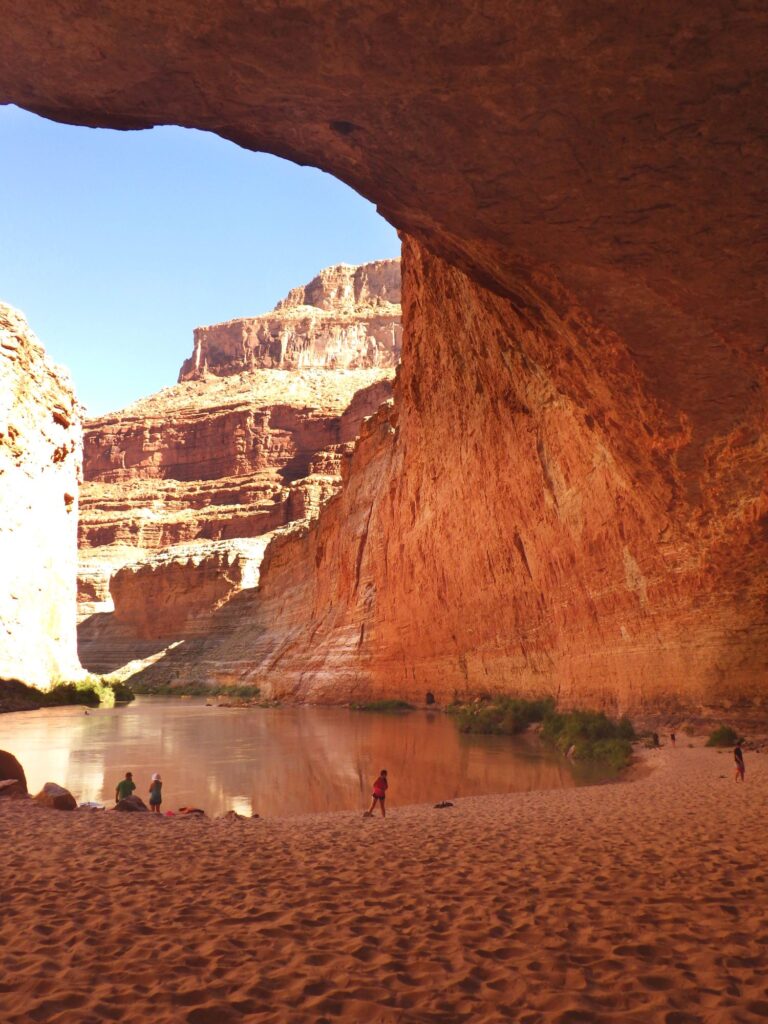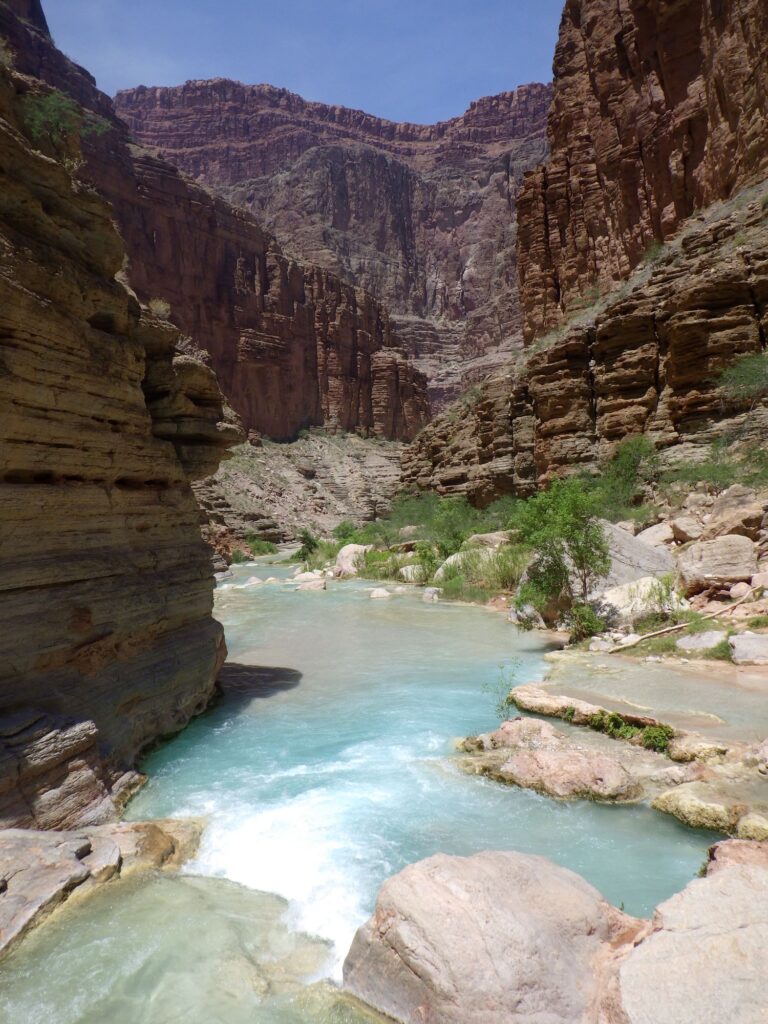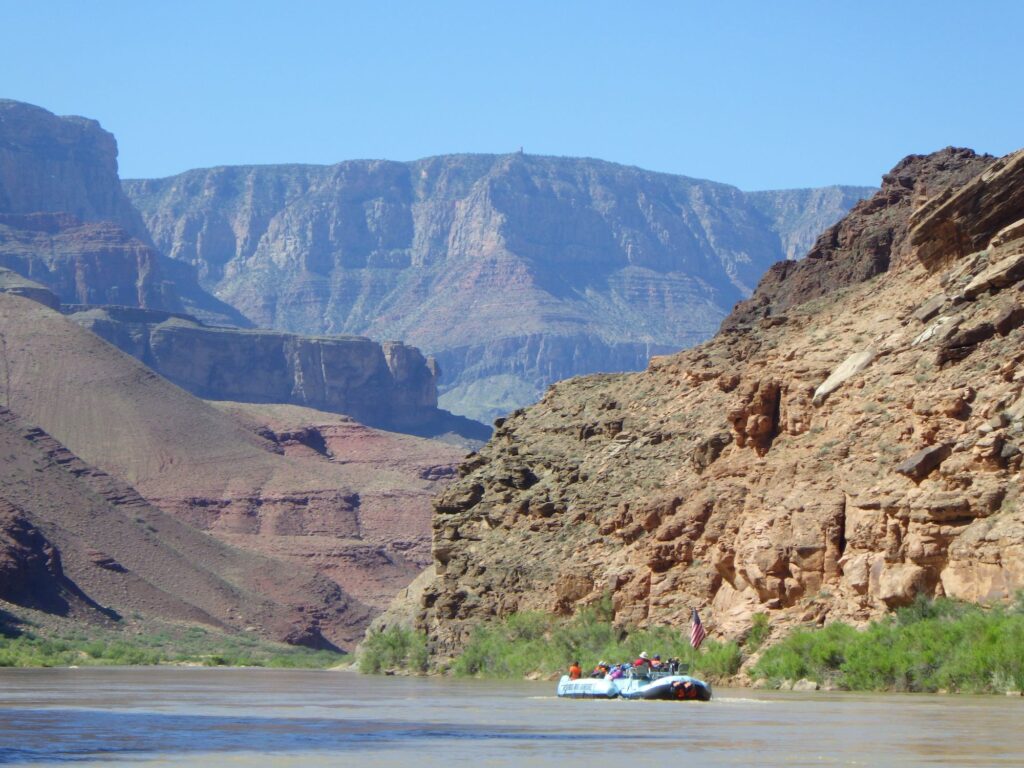In 2015 our family of 4 embarked on a 7 day, 188 mile journey thru the Grand Canyon encountering 67 white water rapids with Wilderness River Adventures. This trip would most likely be our last “family” vacation as both boys would now be in college so we wanted to make it a memorable one. A year’s worth of planning went into the trip and the experience did not disappoint. Prepare yourself to be totally “unplugged” from the rest of the world, something very difficult to do in this digital age. We went on a commercial tour using a licensed Colorado River concessioner. Please read below for some helpful tips and answers to common questions for planning and experiencing the river adventure.
Decide how actively involved you want to be on the river
There are many different kinds of boats that travel thru the Grand Canyon on the Colorado River and you need to decide how active you want to be in your mode of transportation. The types of boats include: large motorized rafts, oared rafts, paddle rafts, and dories.
Dories are classic wooden hard hulled, oar powered boats that allow you to experience the river the way John Wesley Powell did on the first expedition thru the Grand Canyon. There is little physical effort on your part as the boat is rowed by your guide. These trips are at a more leisurely pace.
Oar boats are inflatable rafts with one set of large oars rowed by your guide, carrying 2 to 4 passengers. Depending on the company, you may have the opportunity to take control of the oars. These trips are also at a more leisurely pace. These boats are less likely to flip over in the rapids compared to paddle boats and inflatable kayaks.
Paddle boats are inflatable rafts where all travelers (usually 6 to a boat plus a guide) are required to participate and work as a team under the guide’s instructions. This is the most physically demanding of the trips. In addition, some companies also have single small inflatable kayaks that guests are allowed to paddle on their own in certain sections of the canyon.
Motorized rafts are large inflatable rafts with a small engine, no paddling/rowing is involved. These boats can take you thru the entire canyon in the shortest time period. We chose this option for a few reasons: 1) my husband had recently had shoulder replacement surgery and we did not think he would be able to participate on a paddle boat, 2) we were limited on time (10 days) and really wanted to see the entire canyon, and 3) both my husband and Ryan are afraid of heights – if you go on a shorter distance trip, you generally either put in or take out at Phantom Ranch. This requires a 6-8 hour, 7.5 mile hike with 4,600 ft gain/loss in elevation, while carrying 20 lbs (pack +water)
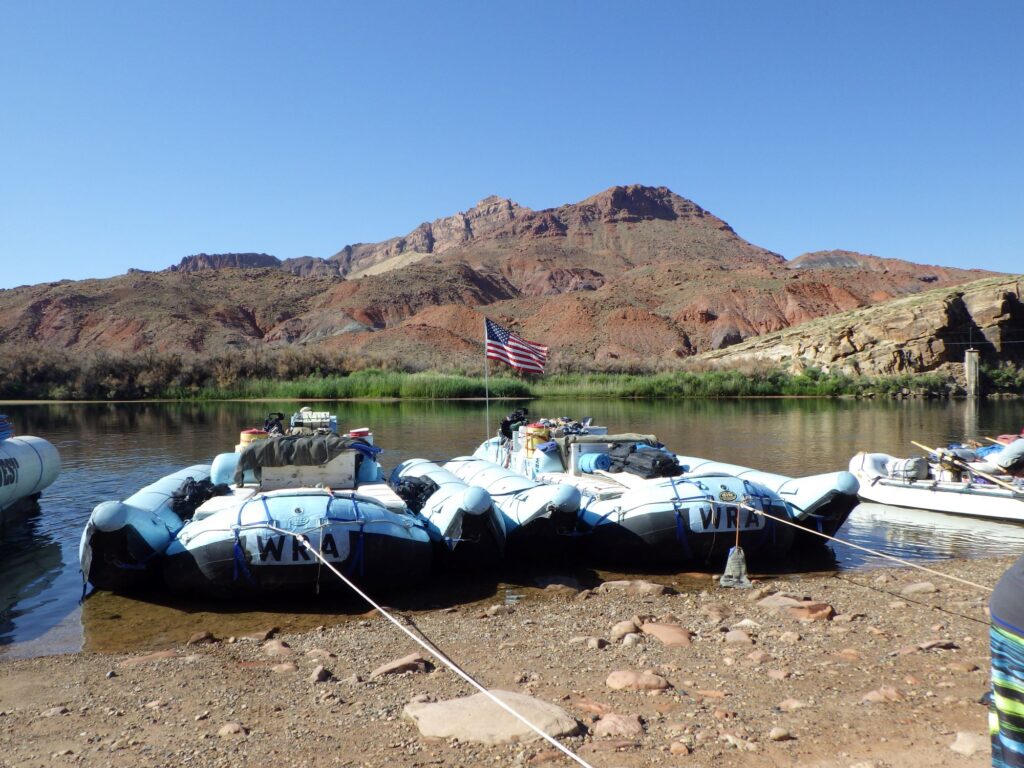
Decide how long you want to be on the river
Commercial Grand Canyon river rafting trips vary in length from 3 days to 25 days and are offered from the first week in May thru the beginning of September. There are also 1 day Colorado River Float trips which put in at the Glen Canyon Dam in Page, Arizona and then float 15 miles downstream to Lee’s Ferry where the whitewater trips begin. There is no whitewater encountered on these float trips and technically you are not in “the Grand Canyon”. Most multi-day trips put in at Lee’s Ferry or Phantom Ranch and take out at Whitmore Wash or Phantom Ranch.
We chose a 7 day raft trip thru the entire canyon with 2 days of travel before the start of the trip and we flew home the day after the trip, for a total of 10 days.
Figure out the logistics of your pre & post travel
As mentioned previously, most trips do not start and end at the same location. Whether you will be driving or flying to start your trip, you will need to get your logistics in order, whether that be arranging for car transport, car rental, or a shuttle service. We flew into Las Vegas from the East Coast. Other airports to consider within a 5 hour drive are Page, Flagstaff or Phoenix. The following day we rented a car thru Avis and drove 5 hours from Las Vegas to Page, Arizona (stopping for a brief visit in Zion National Park). This was the only car rental company that I could find that offered a one way trip without an astronomical drop fee. I could not make this reservation on-line, I had to speak to Avis directly. After finishing the rafting portion of our trip we were helicoptered out of the canyon to Bar 10 Ranch. We then had the option of taking a small (8 seater) plane from the Bar 10 Ranch back to either Las Vegas or Page. All of these return flights were included in the cost of the trip from the tour company.
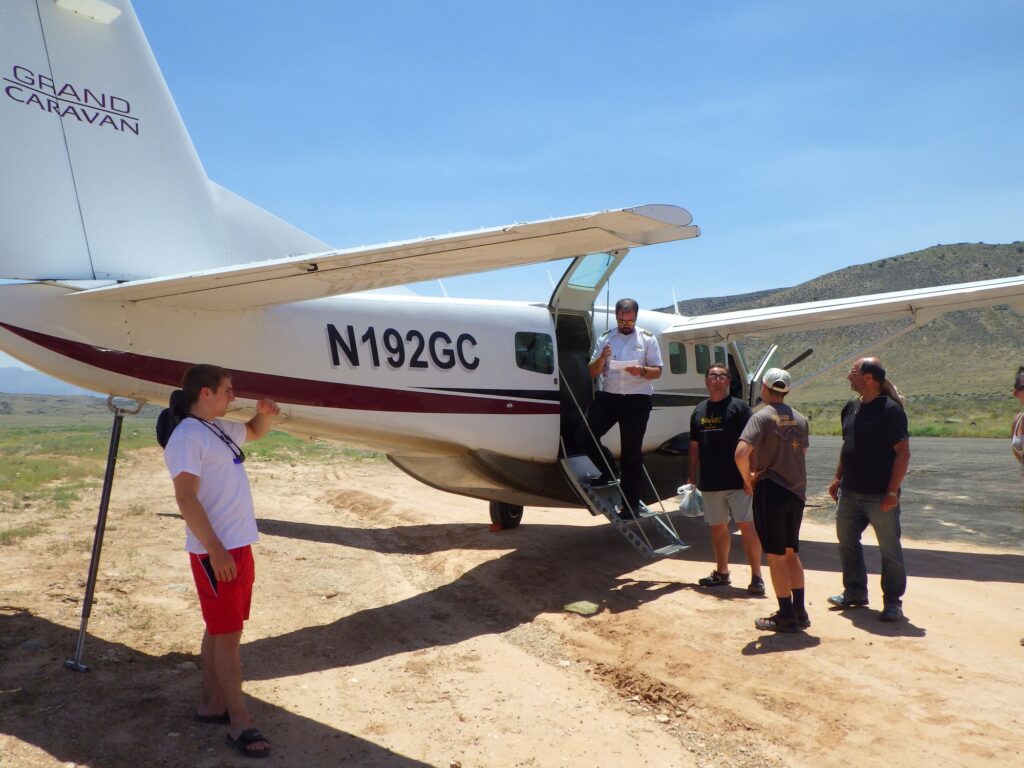
Which rafting company should I use?
Now that you know what you are looking for, what rafting company should you use? The best place to start is the National Park Service website www.nps.gov on the Grand Canyon’s page. They list all of the river rafting licensed concessioners. I researched each company’s website and I also looked up these companies on Trip Advisor for reviews. From what I read, all the concessioners had good reviews and for us it came down to our available dates and how they fit in with each company’s availability. Expect to book close to a year in advance, if not more. We went with Wilderness River Adventures and were extremely happy.
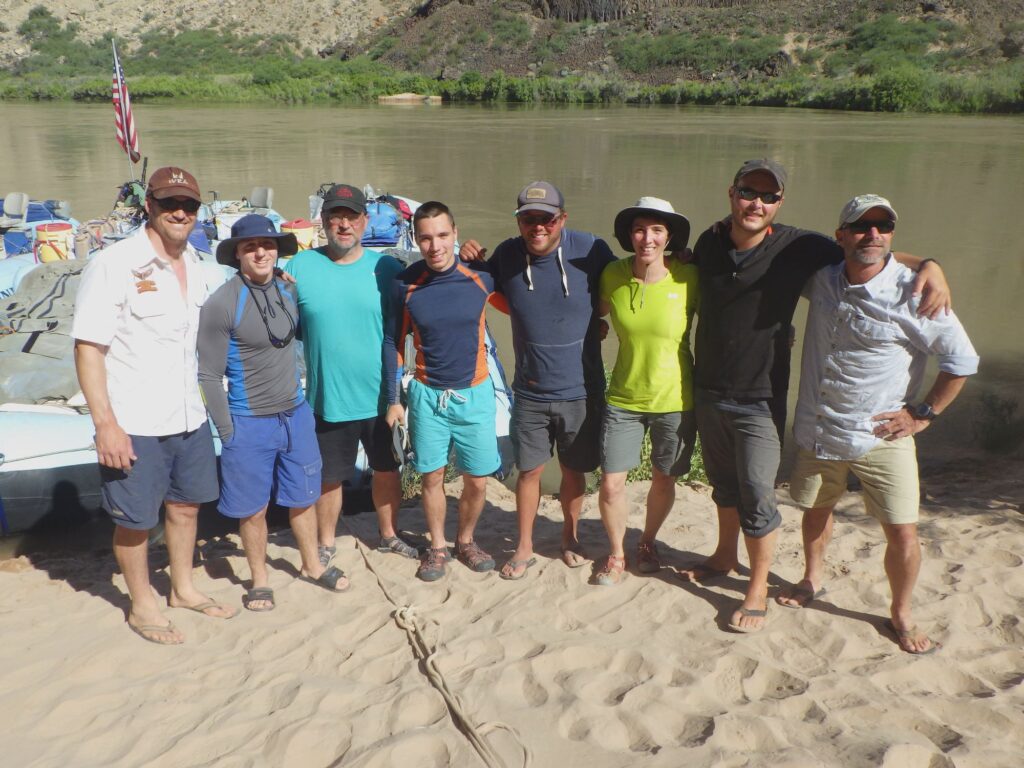
Is a Colorado River trip a “safe” activity?
Your safety is the company’s top priority. We had to sign an “Acknowledgement of Risk Form” and attend a safety briefing the evening before the trip. Properly secured life jackets were required at all times while on the raft and they did enforce this rule. They also covered what to do if you fell out of the raft and also what the responsibilities of your fellow raftmates were, if this occurred. We had a surprise mock drill during the trip, fortunately no one fell out of the raft during our trip. Handwashing was strictly enforced before all meals. The handwashing station was at the start of the meal line so everyone had to wash there hands before proceeding. It is highly recommended to purchase trip insurance for this trip. Any type of medical evacuation during the trip would require that you be airlifted out of the canyon. The guides carry a satellite phone for emergencies. There is absolutely no cell service ( my phone didn’t even register the time).
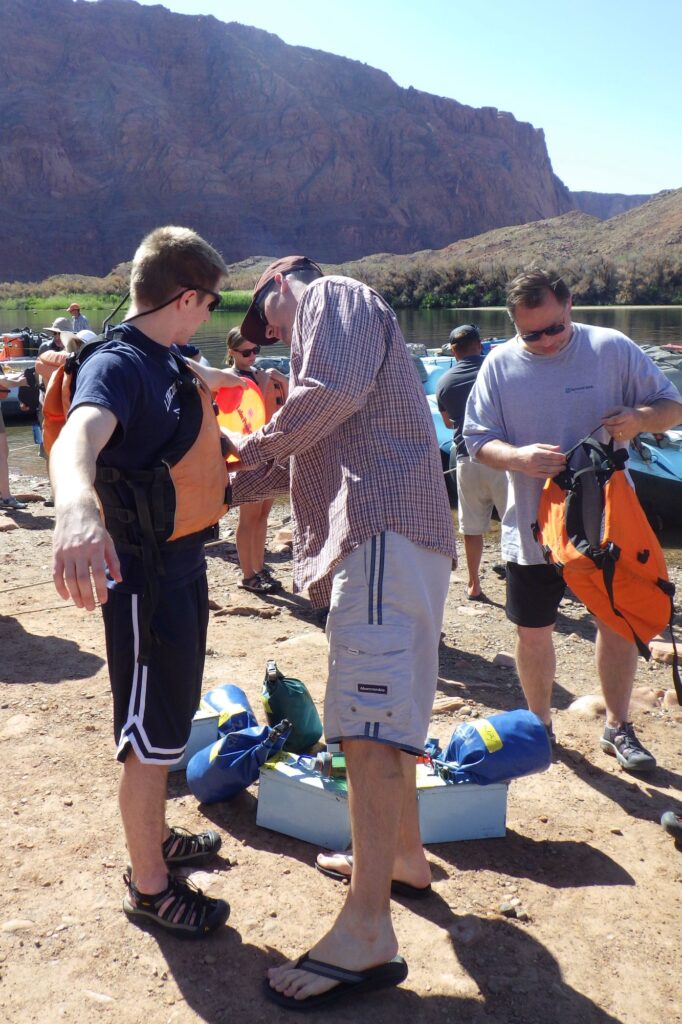
Speaking of food, is there enough to eat?
The food was incredible on the trip, all prepared by the guides. It was so nice to spend a week of no meal planning, prepping, or serving. Every morning started with an early call of “coffeeeeeeeeeee!”. This was the guides way of telling us to start waking up and packing up. Cooked to order breakfast followed about 30 minutes later. Lunch consisted of sandwiches, salads and cookies. While on the raft, granola bars, snacks, chocolate, water, and lemonade were available. Guests are allowed to bring soda and alcohol and it is placed in mesh bags which are dragged behind the raft in the 50+ degree water. On our trip, dinners included an appetizer, main course, vegetable, and dessert, all prepared by the guides. The guests were responsible for clean up and washing their own dishes.
Our menu:
- Cream of potato soup, salad, grilled pork chops with applesauce, cornbread stuffing, corn on the cob, cheesecake
- Garlic shrimp, salad, grilled steaks, roasted potatoes with mushrooms (steak & eggs for breakfast the next morning)
- Cheese/salami/crackers, salad, grilled chicken, scalloped potatoes, green beans, cornbread, peach cobbler
- Spinach artichoke dip/chips, salad, prime rib, mashed potatoes, asparagus, rolls
- Fajitas, tacos, brownie birthday cake
- Smoked salmon, spaghetti & meatballs, garlic bread, pineapple upside down cake
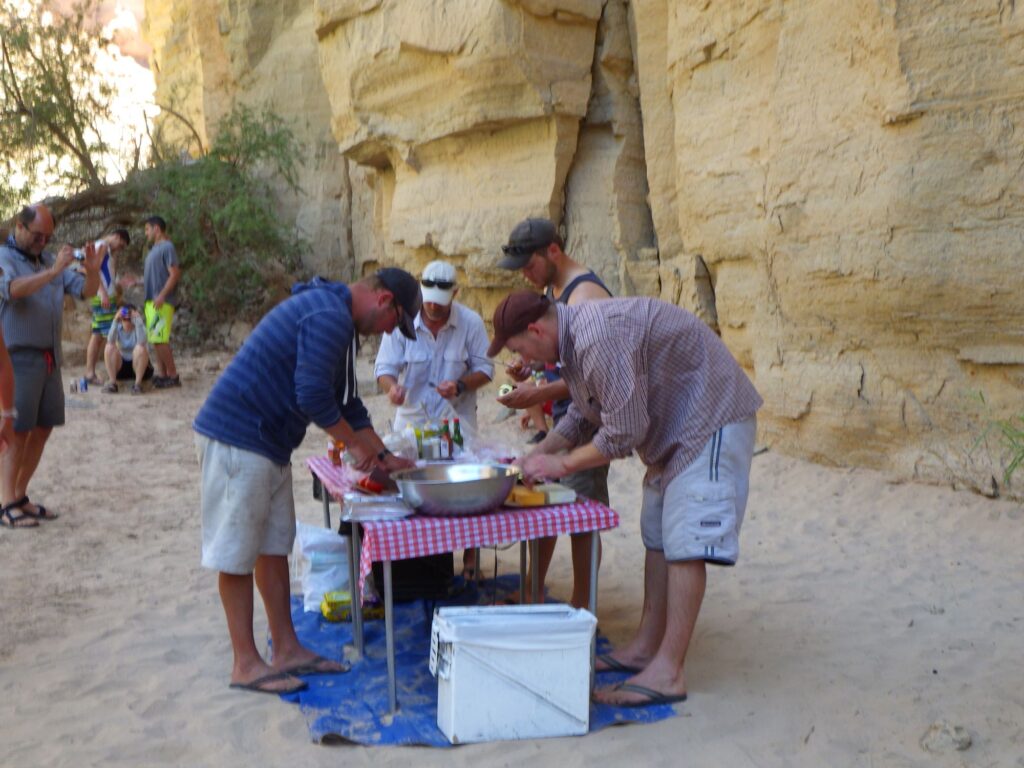
What about the bathroom situation??? Are there restrooms?
Simple answer – NO, there are no restrooms. However, during the lunch break and when camp is setup for the night, the first thing the guides did was set up the bathroom station (a bucket with a seat on it) and handwashing station. It was called “Oscar”. If the roll of toilet paper was at the washing station, it meant that the bathroom was available, if the toilet paper was missing, it meant the bathroom was in use. You will never find a bathroom with a better view.
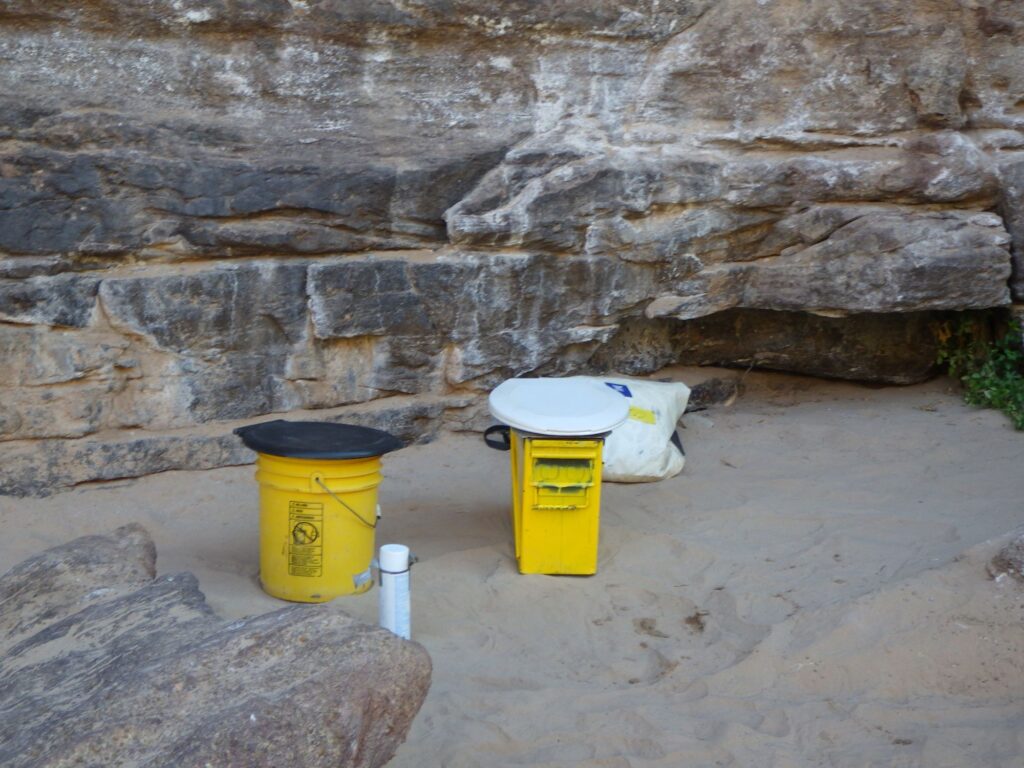
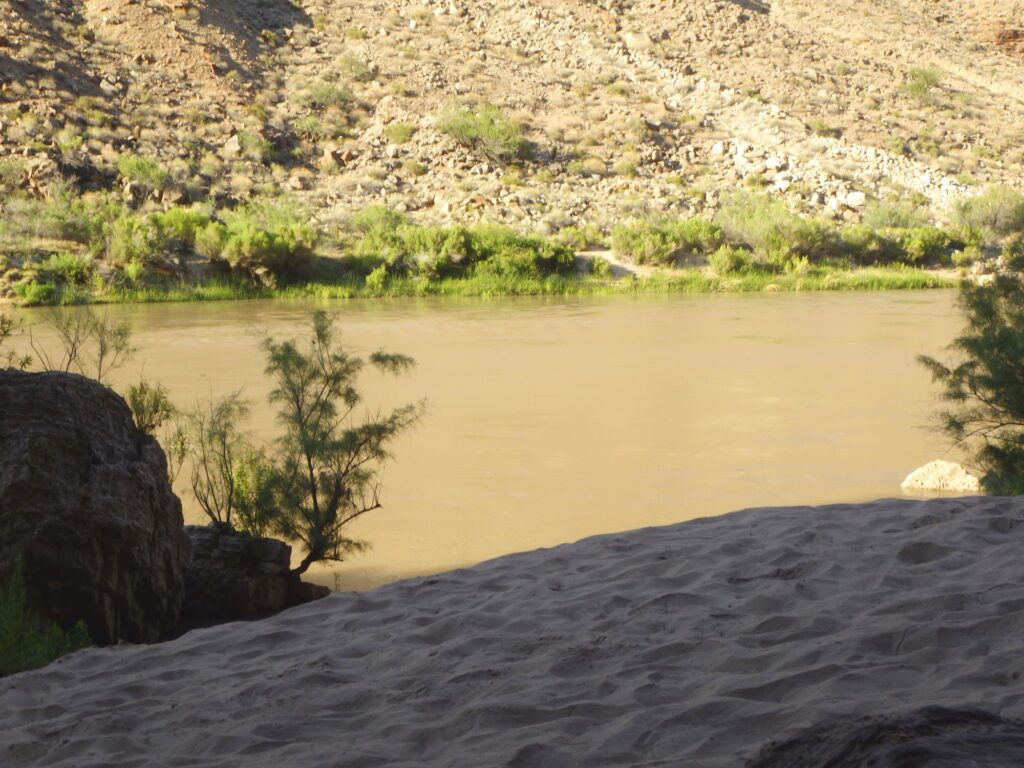
Am I going to get wet?
Yes, you are going to get wet on the raft, but how wet depends on where you sit in the raft. On our raft, there were 5 sections. “The Bathtub” is the very front section of the raft. You will get soaked there and at times submerged when going thru the rapids. “The Shower” is where the front of the boat is connected to the pontoons, this area gets the most spray. “The Pontoons” are the big blue tubes and you can actually “ride” them in the calmer sections of the river. “The White Seats” are exactly as they sound, this was the area where most people sat when going thru the rapids, with the exception of those people sitting in “The Bathtub”. Finally, “The Chicken Coop” is where the highest seats on the raft are located, near the captain. This is the driest area.
What camping supplies do I need to bring?
It most likely depends on the rafting company, but most companies provide all of the camping and dining equipment, you just need to bring clothing (limited), toiletries, and a water bottle. Our company provided each of us with: a sleeping bag, a sheet, a cot, 2 dry bags (one for your sleeping bag and the other for your personal belongings), & an ammunition box. The ammunition box is where you kept things that you wanted to access while on the raft during the day (ie. Sunscreen, camera, rain gear, etc). The rest of your gear in the drybags was inaccessible until we reached camp. There were also tents available, but we had such great weather that we didn’t use the tents and just slept under the stars every night.
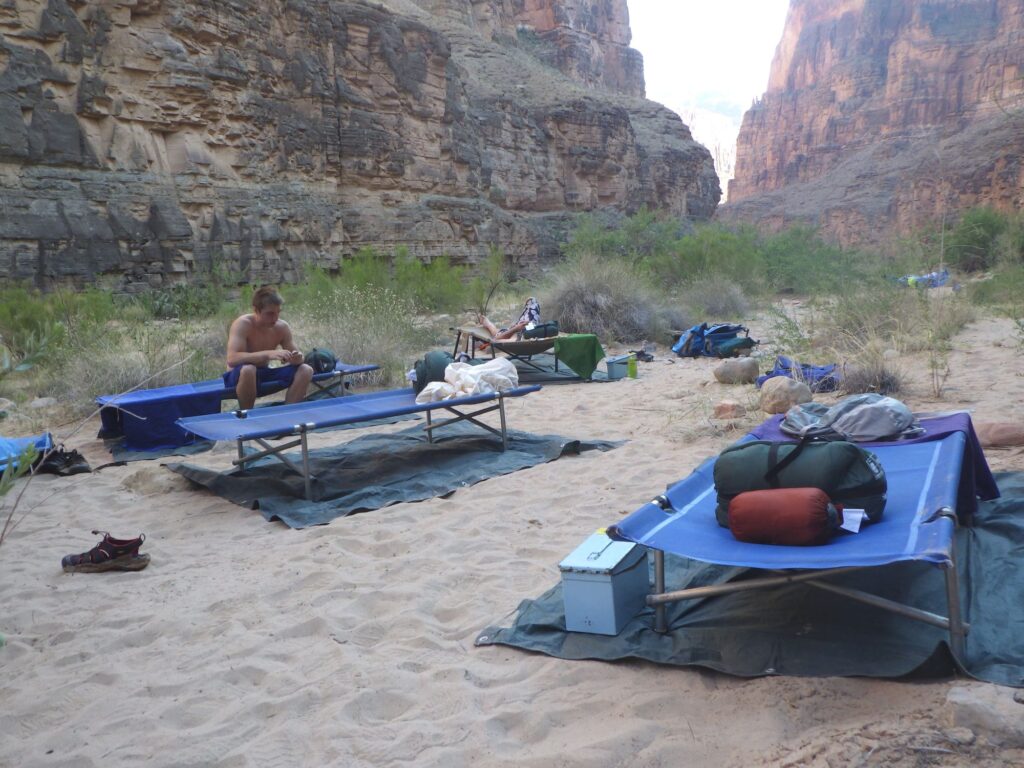
What clothing and miscellaneous items did we pack?
Think minimalistic. There is no one to impress and all of your personal items must fit in the dry bag the company supplied. There are no showers, the river is your shower/bathtub and it is cold.
- Rain pants & jacket – good for bad weather but even if it doesn’t rain, the canyon is quite cold in the morning until the sun rises above the canyon walls. Combine that with 50+ degree water splashing on you and you will be thankful for the raingear
- Sunshirts – we found these much easier to wear than constantly reapplying sunscreen throughout the day. They were also good for the hikes. We soaked them and wore them to keep cool while hiking
- Quick drying shorts or bathing suit
- Sunhat with strap – baseball hats tended to blow away
- Water sandals (not flip flops) – we all wore Keen’s and were very happy with them both on the raft and hiking. Hiking boots are not required, but may be needed if you are only rafting half the canyon and have to hike in/out the 7 miles
- Quick drying underwear/sports bras
- Sunglasses & sunscreen – make sure to apply to the top of your feet
- Large mouth water bottle
- Carabiners – good for attaching water bottles to the raft for easy access during the day
- Camera/Go pro with powerbank for charging
- Camp towel
- Comfy outfit to wear around camp in the evenings
- Toiletries & medications
- Headlamp
- Cards/book
- Guitar – we did not bring this, but someone in our group did and entertained us every night with their music
- America the Beautiful National Park Pass
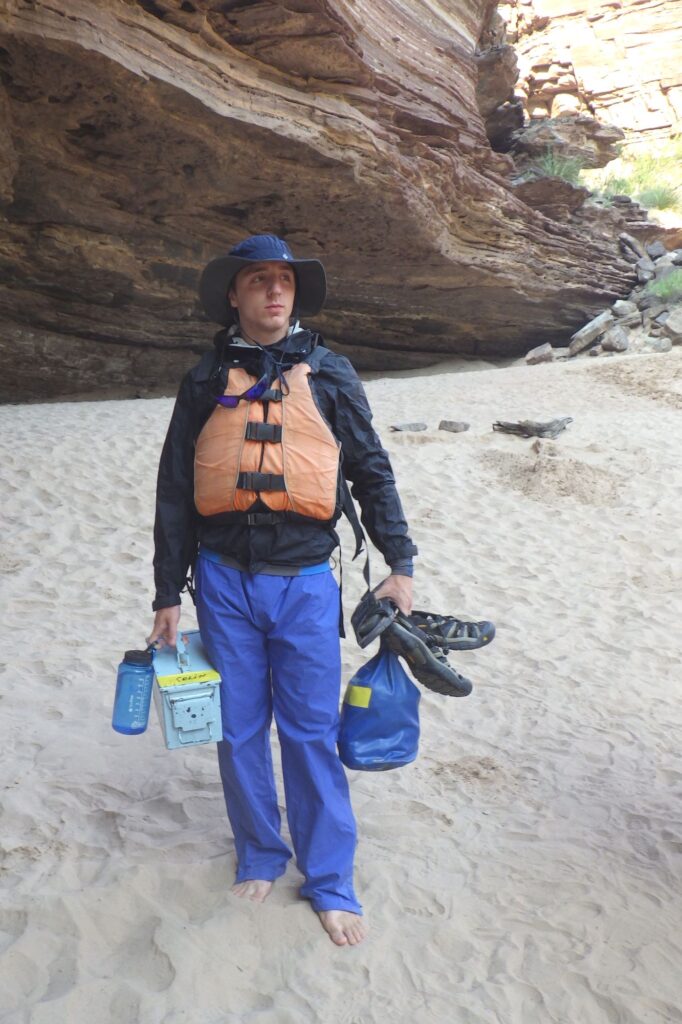
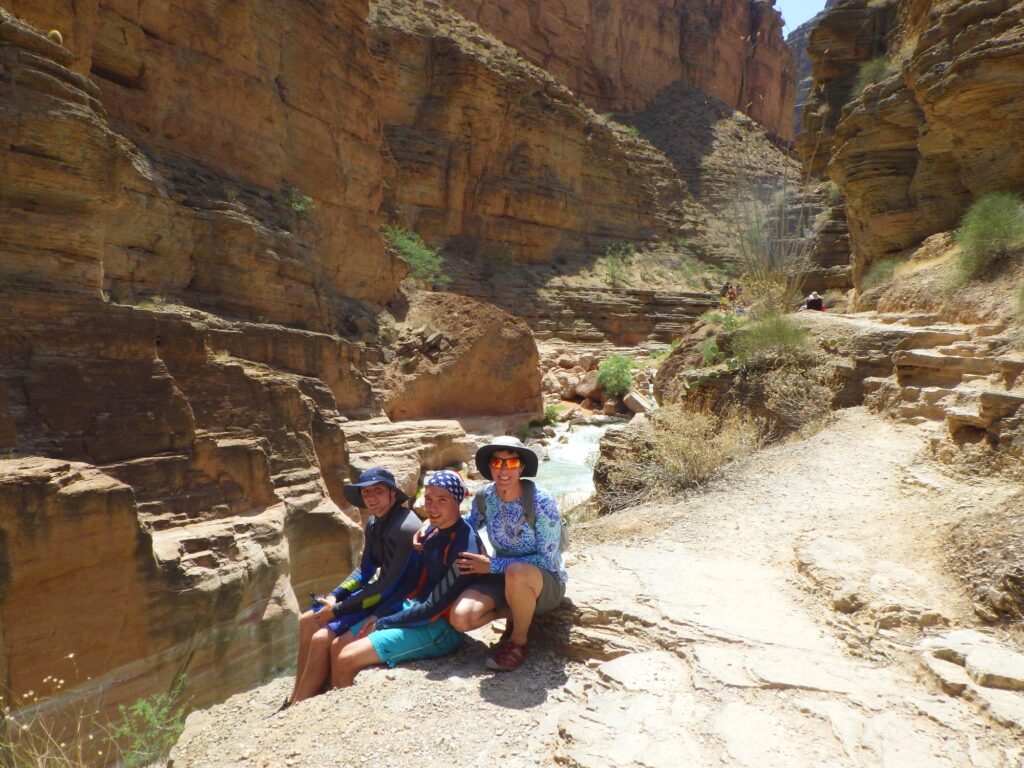
What is a typical day on the river like?
Early morning wake up, followed by breakfast. A fireman’s line is then formed and everyone helps load the rafts. Our group consisted of 2 large rafts with 14 guests and 2 guides on each raft. We would raft a few hours and then pull over for lunch, raft a few more hours and then pull over and set up camp. Again, a fireman’s line is formed and everyone helps unload the rafts. Dinner, cleanup, and then bedtime. There was usually a few hours of free time at the campsite before and after dinner. Other stops were also made during the day for specific hikes, waterfalls, and archeological sites.
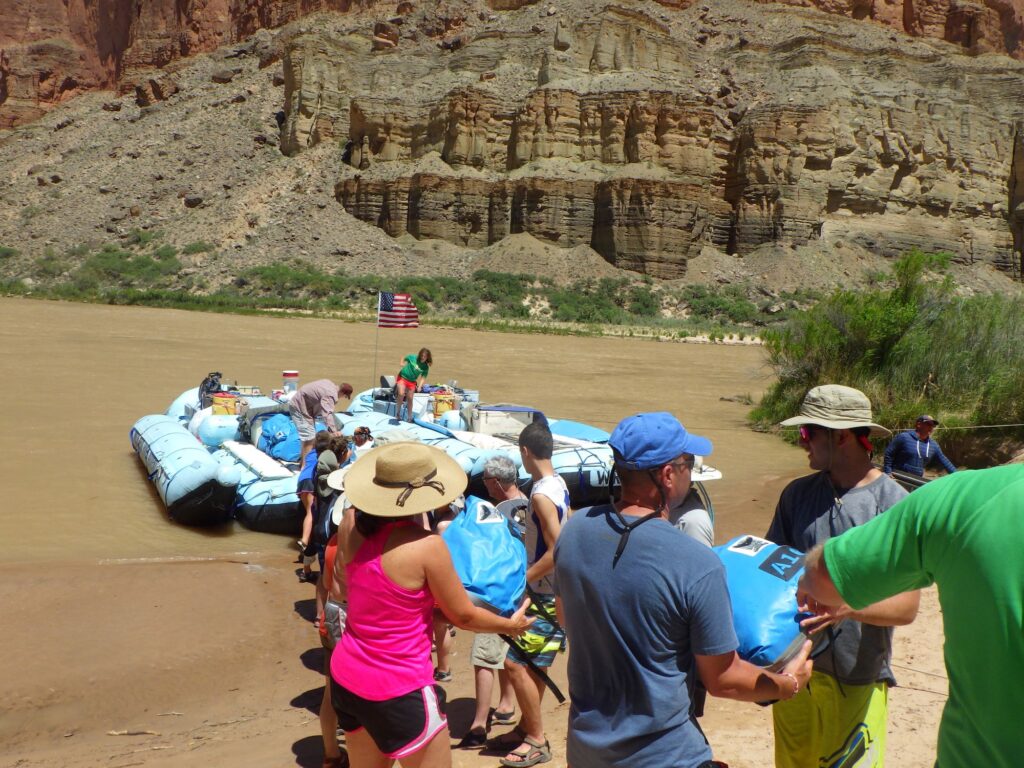
Do I have to hike a lot?
There are certain trips which are more geared to hiking, ours was not one of these trips. That being said, there was at least one guided hike offered each day. The hikes were optional and one guide always stayed back with the boats. The boys and I did all of the hikes offered.
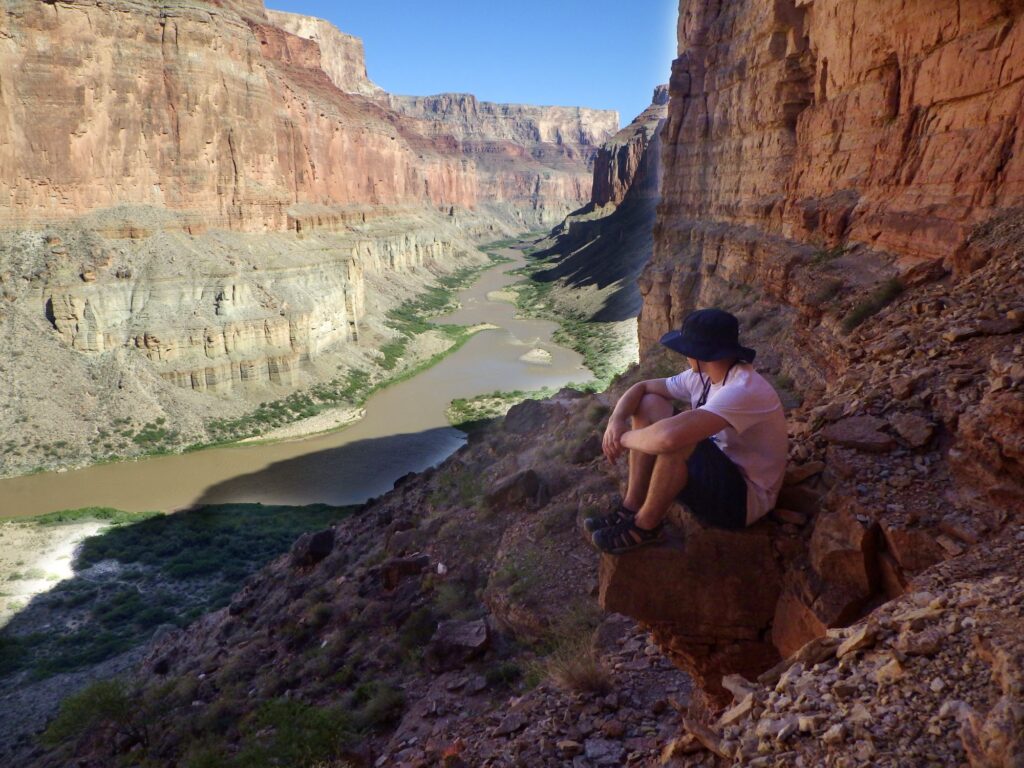
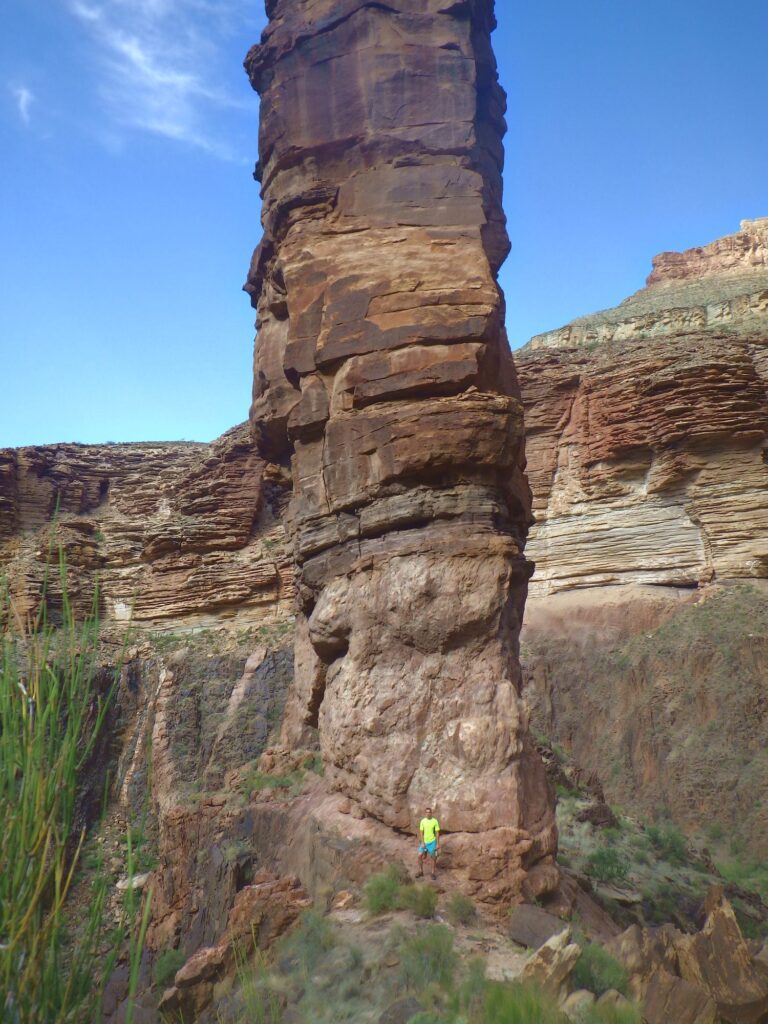
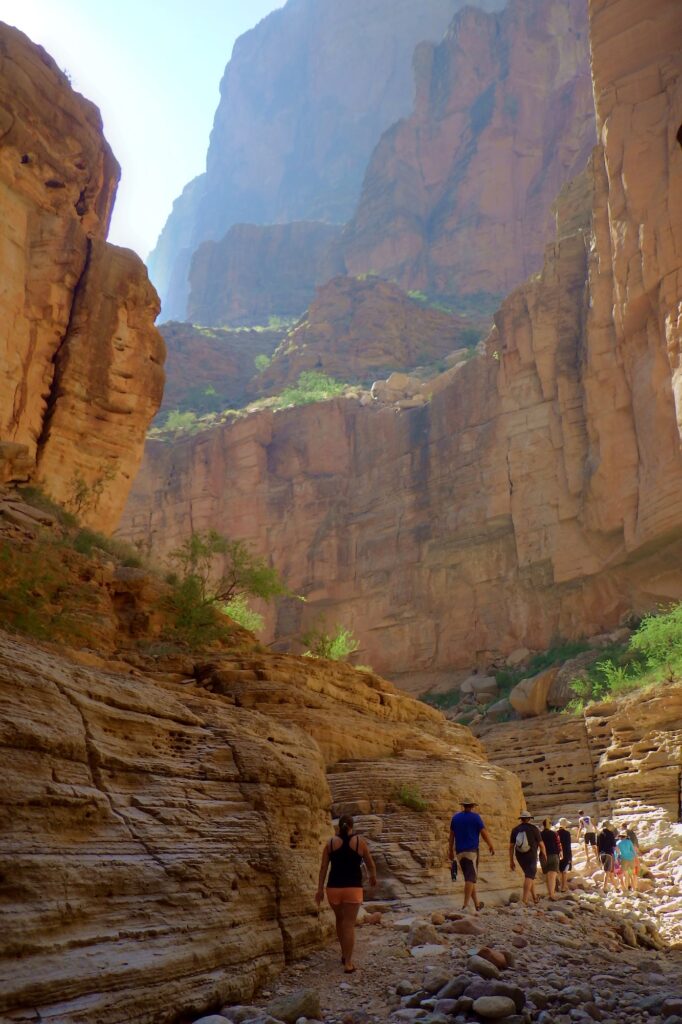
Our itinerary
You could go with the same rafting company every year and every trip would be different. There are no reservations made at the campsites and each campsite has a limit as to how many campers can be there. The campsites are first come, first serve and the guides from different companies talk to each other on the river during the day jockeying for where their tour will stay. Our itinerary is listed below. I hope my answers above help you in your planning and educate you on what to expect on the river.
- Day 1 – departed Lee’s Ferry, traveled 29 miles thru Marble Canyon and camped at Shinumo Wash
- Day 2 – traveled 23 miles, stopped at Red Wall Cavern for some frisbee, hiked to the Nankoweap Granaries, camped at Nankoweap
- Day 3 – traveled 42 miles, restocked our water supply at Phantom Ranch, hiked a 4 mile trail at Monument Creek, camped at Granite
- Day 4 – traveled 43 miles, stopped at Shinumo Creek waterfall, hiked in Blacktail Canyon, stopped at Stone Creek waterfall and Deer Creek waterfall, camped at Poncho’s Kitchen
- Day 5 – traveled 28 miles, spent the afternoon in Havasu Canyon and Havasu Creek, camped at Tuckup Wash
- Day 6 – traveled 18 miles, hiked in National Canyon to another waterfall, camped at Upper Chevron
- Day 7 – traveled 5 miles to Whitmore Wash, helicoptered out to Bar 10 Ranch, hot showers at the ranch, 40 minute flight on an 8 seater plane to Boulder City, NV and then a bus back to Las Vegas.
